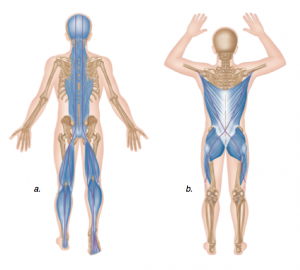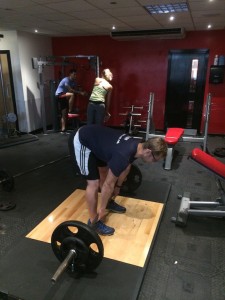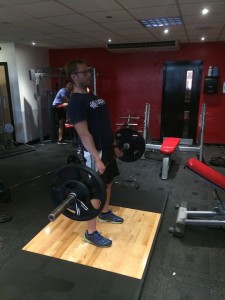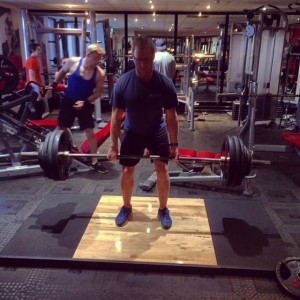Posterior Chain Training
What is the Posterior Chain?
The posterior chain is the group of muscles, ligaments and tendons that make up most of the back of the body. These muscles are responsible for all kinds of movements, joint stability and maintaining posture.
How Does the Posterior Chain Work?
From an exercise point of view the muscles of the posterior chain are arguably the most important of all. From a functional point of view they support the posture, the back and hips which has a knock-on effect with regards to back, hip and knee stability.
When it comes to movement, the posterior chain is important as the posterior chain muscles are all fully engaged in the hip hinge, the fundamental primary movement of a whole host of exercises – all deadlift variations, all squat variations, all clean and snatch variations and all kettlebell swing variations.
Unless your training is limited to upper body only exercises, chances are you’ve engaged your posterior chain at some point in your training.
Common Problems with the Posterior Chain
A weak, untrained and stiff posterior chain is the root cause of a whole host of problems from an injury and performance point of view.
Sitting for too long weakens the muscles of the posterior chain and shortens the hip flexors. This is a problem I commonly see in new personal training clients, mostly because modern life is ripe for creating these issues in people.
With sedentary jobs, long commutes and leisure time spent sat with a phone or computer in our hands, it’s no surprise most of us have tight hip flexors and a weak posterior chain.
Even in those of us who are active, a tight posterior chain is fairly common due to a lack of effective stretching. If you are spending a long time in the gym (3 hours plus per week) but only a combined 5 minutes per week of stretching, you are seriously out of balance when it comes to your training.
The solution is to correct the balance by spending at least 5-10 minutes every morning and evening stretching thoroughly. If needs be, take a yoga class or have regular deep tissue massage.
Lastly, weakness due to ignorance is the other major problem I see. Unfortunately we have an issue with form over function when it comes to our training.
Many people want to train purely to look a certain way, rather than to perform well. This manifests itself in neglecting the muscles of the posterior chain, leaving them weak and unable to support the posture, hips, knees and lower back. This increases the likelihood of injury to one or more of these joints.
Exercises that Train the Posterior Chain
There are lots of exercises that recruit the posterior chain – the below is a general snapshot and an outline of the kind of exercises that should feature in an effective posterior chain training programme….
- Deadlift – all variations
- Kettlebell Swing – all variations
- Reverse Hyperextensions/Glute-Ham raise
- Leg Curls
- Calf Raises
- Weighted carries
Sample Posterior Chain Training Routine
- Single arm kettlebell swings 3 x 20 (light weight, warm up)
- Double arm kettlebell swings 3 x 10 per side (medium weight, warm up)
- Romanian Deadlifts 4 x 8
- Stiff legged Deadlifts 3 x 10
- Leg Curls 2 x 15
- Calf Raises 2 x 30
If all of this is a little intimidating just now, you can start with a solid kettlebell swing. A good kettlebell swing both strengthens and stretches the posterior chain and engages all of the joints along it. In terms of bang-for-your-buck exercises, it’s up there with the best. I would include it in all posterior chain training sessions.
Select a weight you are comfortable with and work on your technique until you swing the kettlebell well. There are plenty of YouTube videos teaching technique, but here is a simple idea of what the technique should look like…
It’s a good idea to keep a kettlebell with you at home or at work and swing it a few times every hour – especially if you are sitting for long periods of time. I know Tim Ferriss is a big proponent of this, saying it helps with his mobility and to prevent stiffness. I’d agree wholeheartedly with this opinion. It’s a great exercise for hip and back mobility.
Amazon do a great range of reasonably-priced cast iron kettle bells (never buy plastic – they’re crap).
I’ve shown you how important the posterior chain is in this article, so if you want to optimise health and performance whilst minimising injury, make sure you keep your posterior chain well trained!




One thought on “Posterior Chain Training”